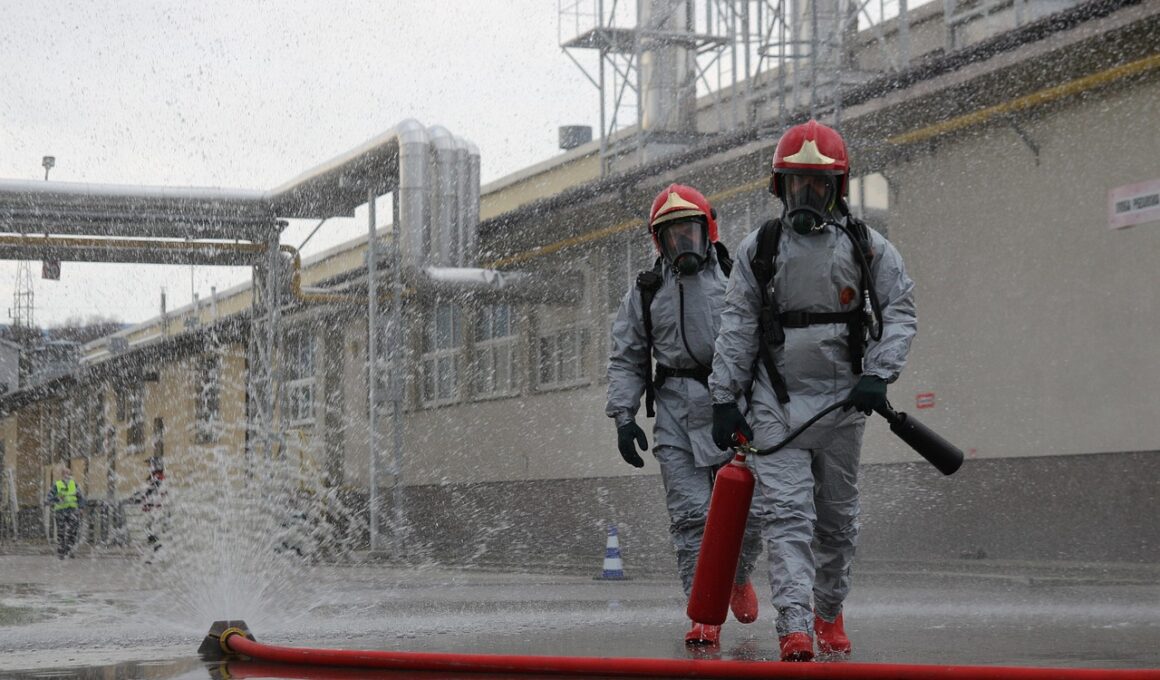Understanding Pool Water Chemistry for Swimmers
Swimming requires attention to various factors, and one of the most critical components is pool water chemistry. Proper pH levels ensure that the water remains sanitized, safe, and comfortable. The ideal pH for pool water is typically between 7.2 and 7.8, which allows chlorine to effectively disinfect without irritating skin or eyes. If the pH is too low, it can lead to corrosion of pool equipment and disrupt the balance of chemicals. On the other hand, a high pH can reduce chlorine efficiency, promoting algae growth and cloudiness. To maintain balanced water chemistry, regular testing is necessary. Use test kits or strips weekly to monitor the pH, chlorine, and alkalinity levels. In addition to this, check other vital parameters like calcium hardness as well. Always add chemicals gradually and allow time for the water to circulate before retesting. Remember, a clean swimming pool starts with properly balanced chemistry, ensuring an enjoyable swimming experience for everyone, whether you are a beginner or an experienced swimmer. By prioritizing pool water chemistry, swimmers will have a more pleasant and healthier time in the water.
Importance of Chlorine and Sanitization
Chlorine is one of the essential chemicals for maintaining pool sanitation. It plays a vital role in eliminating harmful microorganisms that may be present in the water. Proper chlorine levels typically range from 1 to 3 ppm (parts per million). However, swimmers should be aware that chlorine’s effectiveness can diminish if the pH levels are not correctly maintained. In addition to chlorination, there are alternative sanitization methods such as bromine, which is often gentler on the skin and has a wider pH range for effectiveness. Regardless of the chosen sanitization method, regular monitoring is essential. If chloramine levels rise – the by-product of chlorine interacting with body oils, sweat, and organic matter – swimmers may experience unpleasant odors or eye irritation. Shock treatments are effective in breaking down chloramines and rejuvenating the pool’s sanitation levels. Achieving the right balance of chlorine not only ensures a safe swimming environment but also enhances the overall experience and encourages people to swim more frequently. Regular diligence regarding chlorine and sanitization can help avoid complications that might arise due to imbalanced water chemistry.
One of the often-overlooked aspects of pool chemistry is alkalinity, which serves as a buffer for pH levels. Alkalinity should ideally range between 80 and 120 ppm. Proper alkalinity levels help stabilize pH fluctuations, preventing the water from becoming too acidic or alkaline quickly. If the alkalinity is too low, additions of baking soda are typically used to raise levels, while muriatic acid can help lower high alkalinity. Adjusting alkalinity appropriately can prevent many of the common swimming pool issues such as equipment corrosion and mineral precipitation. It also minimizes swimmer discomfort associated with poor water chemistry. Alkalinity acts like a cushion against changes in pH caused by various external factors such as rain, debris, or swimmer load. Therefore, maintaining proper alkalinity is vital for both the swimmers’ comfort and the pool’s structural integrity. A more balanced chemistry not only enhances the swimming experience but also extends the pool’s longevity. Regular testing for alkalinity along with chlorination and pH balancing lets pool owners maintain a safe swimming environment in which everyone can enjoy without concerns.
Dealing with Algae Growth
Algae growth is a common challenge faced by many pool owners. It can turn a sparkling pool into an uninviting green mess, discouraging swimmers from enjoying the water. Algae thrive in imbalanced water chemistry, particularly when chlorine levels drop or pH swings occur. Regularly monitoring these parameters can help prevent algae outbreaks. If algae manage to flourish, the first step is to shock the pool with a chlorine treatment to kill the algae effectively. Following this, brushing the walls and floor will dislodge any residual algae. Keeping the pool clean by vacuuming, skimming debris, and maintaining proper filtration can help prevent such issues. Additionally, consider using algaecides as a preventive measure, especially during hot summer months when algae growth is more rampant. Always remember to follow manufacturer recommendations while using algaecides to avoid adding unwanted chemicals to your pool. Employing these strategies fosters a cleaner and clearer swimming environment, ensuring swimmers can enjoy optimal water clarity. With diligence in chemical balancing and preventive measures, a beautiful pool free of algae is achievable for all swimmers.
Understanding the importance of calcium hardness is also critical when looking at the complete pool chemistry picture. Calcium helps to prevent corrosion of pool surfaces and equipment, and its levels should remain between 200 and 400 ppm. Low calcium hardness can lead to corrosive waters, which may damage pool liners and fixtures, whereas high calcium levels can result in scaling and cloudy water. If adjusting calcium hardness is required, adding calcium chloride can raise the levels, while draining and refilling portions of your pool can help when levels are too high. Maintaining proper calcium hardness works in concert with maintaining pH and alkalinity. Learning how these aspects of pool chemistry interrelate enhances overall maintenance and improves water quality. Regular monitoring of hardness, alongside pH and alkalinity adjustments, promotes a well-balanced environment. Swimmers are thus more prone to enjoy fresh and clean waters, improving their overall pool experience. Furthermore, every step taken towards ensuring optimal calcium levels results in longer-lasting pool equipment, significant savings in repairs, and enhanced safety for everyone involved.
Protecting Swimmers’ Health
When pool water chemistry is well-managed, swimmer health is significantly safeguarded. By maintaining the proper chemical balance, pools will remain free from unwanted pathogens, ensuring all users stay healthy. A well-balanced pool also promotes a comfortable swimming environment, reducing skin and eye irritation related to improper chlorine levels. Additionally, consistent water testing can help identify potential problems before they escalate, making regular assessments vital for health and safety. Many swimmers are unaware that overload in bather loads can significantly affect water chemistry. Understanding how full pools can disrupt chemical balances encourages better habits and maintenance practices. If many swimmers are present, more frequent testing and adjustments may be necessary to counteract swimmer impact on water quality. Implementing a set schedule for testing during peak periods can help maintain safe conditions. Furthermore, encouraging swimmers to shower before entering pools can reduce the introduction of contaminants, such as oils, lotions, and sweat. All of these measures contribute to a healthier swimming environment. Therefore, keen attention to water chemistry becomes a crucial aspect of ensuring that all swimmers have a safe and comfortable experience in the pool.
Finally, remember that seasons affect pool water chemistry as well. Each season brings unique challenges for pool maintenance, from leaves in the fall to algae blooms in the summer. Winter bring different conditions where freezing temperatures can impact pool equipment and chemical stability. During colder months, proper maintenance can help prevent damage and prepare the pool for reopening when temperatures rise. Creating a winterizing process, including lowering water levels and covering the pool, ensures minimal debris accumulation. Regular spring maintenance, which includes shock treatments, can help jumpstart the swimming season. Each seasonal change necessitates adjustments to the water chemistry regimen. Staying informed about these seasonal effects encourages pool owners to stay proactive in their maintenance strategies. Being aware and prepared for seasonal adjustments protects the investment made in the pool. Ultimately, a well-managed swimming pool year-round offers safety and enjoyment to all users. Incorporating seasonal maintenance into the pool care routine ensures efficient use of chemicals and provides remarkable clarity and comfort throughout the year.


